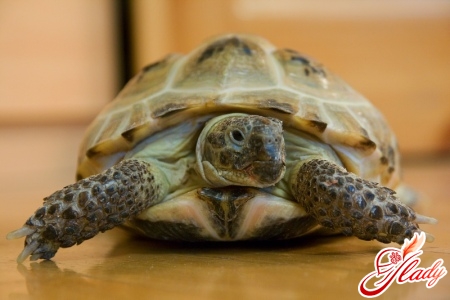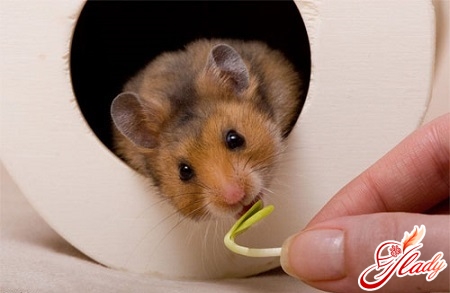 When you go into a pet store, you can't help butstop at the counter where small aquatic turtles are swimming amusingly in a small aquarium, and increasingly think about purchasing this cute reptile? Then it's time to make your plans come true! However, before you decide to take such a step, remember - turtles grow quickly. You buy a "ten-kopeck coin", and a year later you have a reptile living in your apartment that has grown to ten centimeters. And this is not the limit. Will you be ready to continue to house an adult individual? If the answer is yes, let's talk about how to care for a turtle so that it feels at home in an aquarium.
When you go into a pet store, you can't help butstop at the counter where small aquatic turtles are swimming amusingly in a small aquarium, and increasingly think about purchasing this cute reptile? Then it's time to make your plans come true! However, before you decide to take such a step, remember - turtles grow quickly. You buy a "ten-kopeck coin", and a year later you have a reptile living in your apartment that has grown to ten centimeters. And this is not the limit. Will you be ready to continue to house an adult individual? If the answer is yes, let's talk about how to care for a turtle so that it feels at home in an aquarium.
What turtles can live in our house?
First, let's figure out what kind of turtles can live next to us. In total, there are three main types of reptiles:
- Swamp turtles
Residents of the central zone of Russia. They can get into the house directly from their habitat. They are distinguished by the dark color of the shell (the color can be from dark olive to almost black) and a predatory nature.
- Central Asian turtles
Large land turtles, can reachtwo kilograms in weight. In nature, these reptiles live in burrows and are not particularly active. To keep them at home, you need a very spacious terrarium. Caring for such turtles involves regular bathing and oiling the shell. Coarse plant food is suitable for them as food: cabbage, carrots, beets and tough grass.
- Red-bellied water turtle
The most common type, which can most often be found at home. This is what we will talk about next.
We equip the turtle house
For a small turtle (with shell dimensionsabout eight centimeters) you need a standard 55-liter aquarium. But do not forget - turtles grow quite quickly, so for the future you can immediately stock up on a larger aquarium. The smaller the space where the turtle lives, the more often you will have to change the water there. The lid for the aquarium is not essential, but desirable. In order to understand how much water should be in the aquarium, just look at the turtle's shell - the depth should be equal to the length of the shell (it can be a little more). In order not to change the water too often, you can equip the aquarium with a submersible filter. Just remember to change the filter material once a month. You can put a layer of large gravel on the bottom of the aquarium or place several large stones or driftwood there - this will allow you to create areas with different depths in the turtle house. Live plants are not used in an aquarium with turtles, but if you want additional decor - install several artificial branches. Turtles can use them as an additional shelter. Just make sure that these decorations do not have sharp corners. It is also necessary to create a small area of land in the aquarium where the turtle can bask. To do this, simply place a wooden snag on the bottom at an angle so that some of it protrudes above the water. If you have small pieces of ceramic tiles, you can glue them with silicone sealant and make a whole island for your pet. Caring for a turtle also includes mandatory cleaning of the aquarium. Considering that turtles both live and defecate in water, it must be completely replaced every three to four weeks (it all depends on the size of the aquarium). At the same time, you need to regularly add water. The frequency of adding water depends on the number of reptiles in one aquarium, as well as on the presence of a filter for water purification. The main polluting factor is food debris falling into the water. To prevent food from decomposing in the water, experts advise feeding turtles with perishable food outside the aquarium.
Aquarium light for aquatic turtles
It is difficult to imagine caring for an aquatic turtle without properly selected lighting. These reptiles require two types of lamps:
- Ultraviolet fluorescent lamp
Ultraviolet lamps are absolutely necessary, otherwiseWithout a dose of ultraviolet radiation, turtles do not absorb calcium and die. Thus, among young turtles, individuals with a "soft shell" often die. This happens when the calcium level in the reptile's blood decreases. It is important that the lamp power be from 5% (more is possible). Such a lamp should be located at a height of 30 centimeters above the heating site. Over time, the amount of ultraviolet radiation generated by the lamps decreases, so it is necessary to replace them in a timely manner (approximately once every five or seven months).
- Local lighting
Standard lamps are used for it.incandescent or, if desired, you can buy special mirror lamps at a pet store. The power of such lamps depends on how high you mount them, as well as the average temperature in the room.
What do reptiles eat?
Proper care of a turtle isFirst of all, a properly selected diet. Some owners feed their pet only granulated food, but this is wrong! Let's consider what must be included in your turtle's menu. Small individuals are distinguished by their carnivorous nature, although they can also eat quite a lot of plant food. To satisfy all their needs for food of animal origin, you can offer them small crickets, earthworms, frozen krill or guppy fry. The daily diet of an aquatic turtle should include: cabbage leaves, lettuce, turnips, dandelion, any aquatic plants. Sometimes your pet can be offered grated carrots or sweet potatoes. Considering the taste preferences of young turtles, do not expect them to happily pounce on any offered plant food - most likely, they will ignore it. But this does not relieve you of the obligation to regularly offer greens to your pets. Then you can be sure that if the turtle wants greens, it will have them. Often, reptile owners forget about the right vitamin supplements, and this is completely in vain. The easiest way to give a turtle mineral food is to roll an earthworm in it. To prevent the mineral mixture from being washed away by water, it is better not to put the food in, but to pull it through tweezers. For feeding, you need to use any mineral mixtures with vitamin D3 and calcium. If the turtles are very small, they can be given up to eight granules of dry food per day, dividing it into two meals. Or replace the "dry rations" with a large leaf of green lettuce, pre-chopped. Aquatic turtles swallow food while underwater, so they do not need to leave food on the shore, you can immediately throw it into the water. And remove the uneaten remains after some time. Small turtles can be very picky about food at first and refuse granules. But they will definitely never be against live food: bloodworms or tubifex. Therefore, be patient, as the picky pet grows up, it will eat with a greater appetite. Caring for the turtle should bring you joy, only in this case both will be satisfied: both you and the pet. If you are too busy and circumstances do not allow you to pay due attention to the animal, it is better to wait with the purchase. Otherwise, keeping a turtle will turn into an annoying duty for you, which can lead to illnesses and even death of the pet. We recommend reading:









